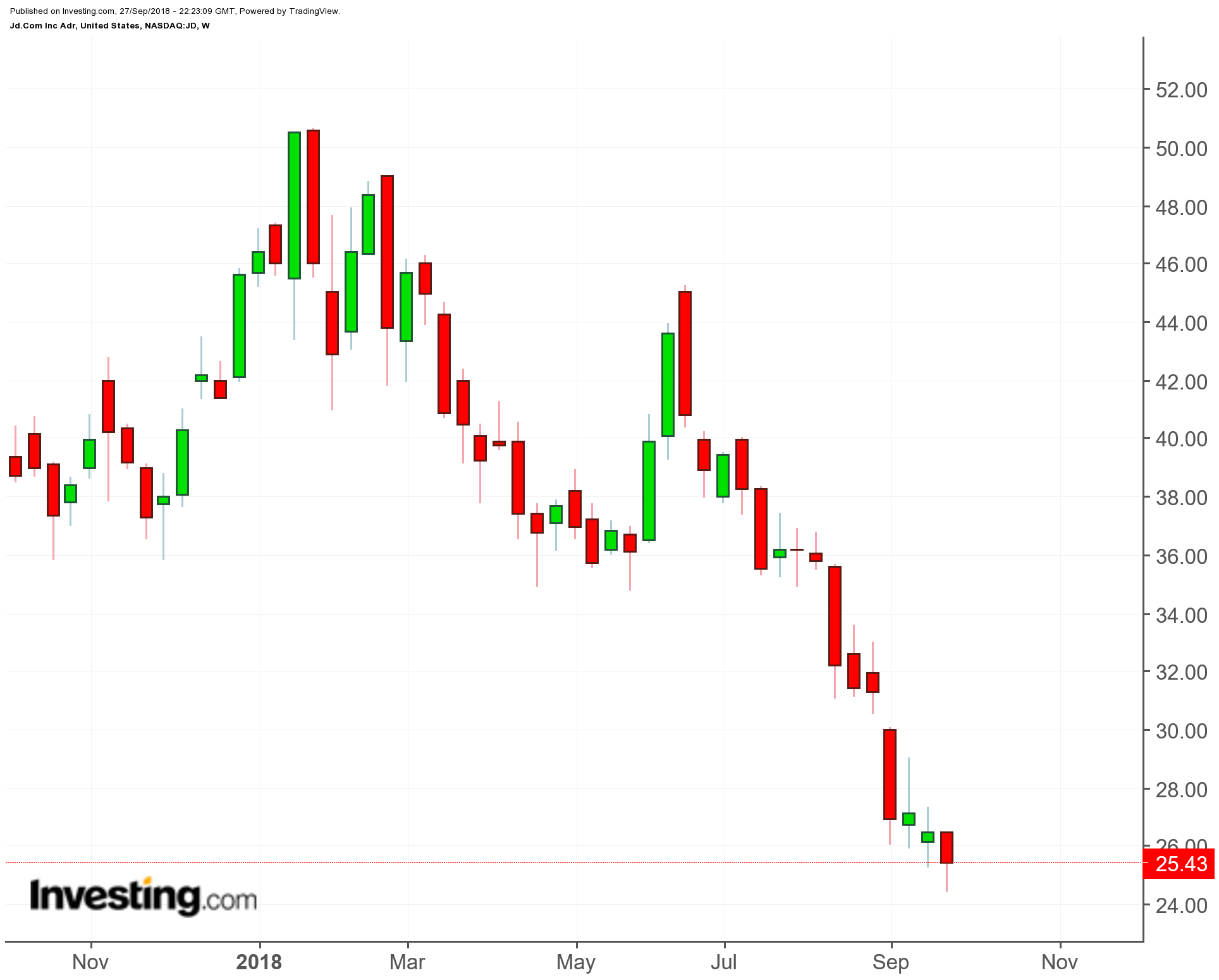Some Chinese technology stocks are getting favorable attention after the market entered bear territory over uncertainty that surrounds the world’s second-largest economy and its escalating trade war with the U.S.
Among the large-cap technology stocks listed on U.S. exchanges, JD.com (NASDAQ:JD) has been through the worst. Its shares have fallen more than 40% this year, wiping out close to all the gains of the past two years.

Beyond the general weakness that hit Chinese technology giants this year, there are many JD-specific issues that are hurting the company and shattering investor confidence in this second-largest e-commerce player in China after Alibaba (NYSE:BABA).
Two things stand out as responsible for the company’s fall from grace.
1. Investment Commitments Are Hitting Earnings
JD.com reported disappointing earnings for the quarter ended in June and gave a weak forecast for the rest of the year, signaling that rising competition in China’s e-commerce market is hurting the company more than analysts anticipated.
The net loss from continuing operations surged to 2.2 billion yuan ($319 million) in the quarter, much larger than analysts expected. The Beijing-based company expects sales in the current quarter of between 104.5 billion yuan and 109 billion yuan, a range that also missed analysts’ forecasts.
The company has missed earnings estimates for two-straight quarters, raising fear among investors that the weakness may last longer. One of the biggest items that’s depressing JD.com’s margins is its massive offline expansion.
Chief Financial Officer Sidney Huang called 2018 as “an investment year” for the online retailer’s logistics division as it builds more warehouses and acquires new technologies.
The biggest difference between JD and Alibaba is that JD takes possession of most of the products sold on its platform and handles fulfillment and logistics tasks through its JD Logistics division.
In China, JD is the equivalent of a combined Amazon (NASDAQ:AMZN), FedEx (NYSE:FDX) and Visa (NYSE:V). During the year ended June 30, some 313.8 million shoppers ordered more than $215 billion of goods over various platforms. Much of that passed through the 11.6 million square meters of warehouse space the company controls.
JD, which separated its logistics asset management company, is betting big on this model and expects that this standalone logistics unit will generate enough revenue that could eventually improve its bottom-line profitability. That model is quite investment-heavy and will require a longer time to generate profit. Until that happens, JD.com will continue to underperform its Chinese peers.
2. Key Man Richard Liu Is a Risk
The arrest of CEO Richard Liu early this month in Minneapolis on rape charges was a stark reminder to investors how his iron grip over company affairs is a constant risk and a drag on the company’s share price.
Though Liu was later released and travelled back to China, the final outcome of these charges is still pending.
Liu maintains tight control over JD.com through his vast voting power. A dual-share structure in which his 15.5% equity stake represents 79.5% of voting shares is a major anomaly. That means other board members can’t convene a meeting without his approval.
Imagine a scenario in which Liu had to serve a jail term in the U.S. What would happen to the company’s growth plans and who will be responsible for its strategic direction? Liu has been the driver of JD’s growth at home and abroad. He attracted some of the world’s largest companies to believe in his vision, including Tencent (OTC:TCEHY), Walmart (NYSE:WMT) and Alphabet (NASDAQ:GOOGL). These global operators own large stakes in the company.
But without major reforms at the corporate level, investors are better off to avoid JD.com, especially when other Chinese stocks are offering a much better risk-reward equation. Investors will certainly welcome a cut in Liu’s voting stake to under 50% and an appointment of second-in-command to mitigate the key-man risk.
